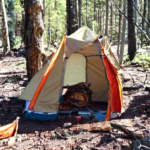Ensure Optimal Eye Health This Winter: Your Ultimate Guide to Understanding and Preventing Snow Blindness
As winter transforms our surroundings into enchanting white wonderlands, it’s crucial to recognize the potential hazards that accompany outdoor activities in snowy settings. One of the most concerning risks is snow blindness, a painful yet temporary condition resulting from excessive exposure to ultraviolet (UV) rays that bounce off the snow’s surface. This detailed blog post delves into the scientific principles behind snow blindness, examines how sunlight interacts with snow, and presents actionable prevention methods, accurate diagnostic tips, and effective treatments. By understanding the causes of this condition and adopting protective strategies, we can fully enjoy the beauty of winter while safeguarding our precious eye health.

Unpacking the Medical Definition and Root Causes of Snow Blindness
The medical terminology for snow blindness is photokeratitis, which signifies a temporary injury to the cornea, the eye’s outer protective layer. This distressing condition is primarily triggered by significant exposure to elevated levels of ultraviolet (UV) radiation, especially those rays reflecting off snow-covered surfaces. The intense sunlight in higher altitudes, where the atmosphere is thinner, can lead to severe discomfort and, in some instances, lasting vision complications. Although snow blindness typically resolves on its own within a short time frame, comprehending its underlying causes is vital for implementing effective prevention and management strategies to protect your vision.
Understanding the Impact of Sunlight on Snow and Your Vision
To truly grasp the complexities of snow blindness, it is essential to evaluate how sunlight interacts with the snowy landscapes. Sunlight travels through the atmosphere, encompassing a spectrum of wavelengths, including potentially harmful ultraviolet radiation. When these rays hit a snow-covered surface, the unique reflective qualities of snow can reflect as much as 80% of these UV rays, significantly increasing exposure levels. This reflection effect is particularly pronounced in elevated areas where the atmosphere’s ability to filter UV radiation is reduced. Consequently, the eyes can quickly become overloaded due to excessive UV exposure, risking damage to critical eye structures such as the cornea and conjunctiva.
Recognizing the Symptoms of Snow Blindness for Prompt Action
The symptoms associated with snow blindness typically start to manifest hours after exposure to intense UV light. While the severity of these symptoms can vary among individuals, common experiences include:
Eye discomfort and pain: Many people report a gritty sensation or a feeling akin to having foreign objects in their eyes.
Redness and swelling: The eyes may appear bloodshot, and the eyelids could swell, showing signs of inflammation.
Watery eyes: Increased tearing occurs as the eyes strive to flush out irritants and alleviate discomfort.
Blurry vision: Tasks that require clear vision, such as reading or driving, can become challenging due to distortions in sight.
Sensitivity to light: Heightened sensitivity to light, known as photophobia, is often accompanied by headaches.
Sensation of halos: Some individuals may perceive bright rings or halos around light sources, adding to visual confusion.
Implementing Preventive Strategies to Safeguard Against Snow Blindness
When it comes to protecting your eyes from the damaging effects of UV radiation, preventive measures are far more effective than seeking treatments after the fact. Here are several practical strategies to minimize the risk of snow blindness:
Wear appropriate eyewear: Always opt for goggles or sunglasses that block 100% of UV rays when you’re in snowy environments. Look for eyewear marked with UV400 or 100% UV protection for optimal safety.
Select wraparound styles: Choose sunglasses or goggles that wrap around the sides of your face for comprehensive protection from both direct sunlight and side UV exposure.
Utilize wide-brimmed hats: Hats with wide brims or neck flaps can provide additional shade, significantly reducing UV radiation exposure to your eyes.
Check the UV Index: Before you engage in outdoor activities, refer to the local UV Index, which predicts daily UV exposure levels. Be vigilant about limiting sun exposure during peak hours, typically between 10 AM and 4 PM.
Apply sunscreen: While it might seem unrelated, applying sunscreen around your face and eyes can significantly reduce UV radiation exposure, enhancing your overall protection.
Take breaks indoors: If you plan to spend extended periods in snowy areas, make it a habit to take regular breaks indoors. This practice allows your eyes to rest and recover from intense light exposure.
Finding Effective Relief and Recovery Solutions for Snow Blindness
If you find yourself experiencing symptoms of snow blindness despite taking preventive steps, several strategies can help alleviate discomfort and promote recovery:
Seek shade: Immediately retreat to a darkened area or indoors to shield your eyes from additional UV exposure.
Remove contact lenses: If you wear contact lenses, take them out to prevent further irritation and allow your eyes to heal.
Apply cold compresses: Gently placing a cold, damp towel over closed eyes can effectively soothe discomfort and reduce swelling.
Use artificial tears: Over-the-counter artificial tears can provide temporary relief, keeping your eyes lubricated and alleviating dryness caused by snow blindness.
Avoid bright lights: Limit exposure to intense light sources, including screens and overhead lights, to lessen the impact of photophobia during recovery.
Rest your eyes: Engage in minimal visual strain activities, and avoid reading or screen time, to give your eyes the essential time they need to heal.
Knowing When to Seek Professional Medical Help for Snow Blindness
In most instances, snow blindness symptoms will begin to subside within 24 to 48 hours as the cornea starts to recover. However, it is critical to seek medical attention if symptoms worsen or persist, as delays in treatment could lead to complications or secondary infections.
Experiencing snow blindness can significantly diminish the enjoyment of winter activities, but with the right knowledge and precautionary measures, we can drastically reduce the risk while savoring the beauty of snowy landscapes. Stay informed about UV radiation levels, take regular breaks in shaded areas, and consistently wear protective eyewear. If you experience any symptoms, seek relief promptly and consult a healthcare professional if necessary. By prioritizing eye safety, you can fully enjoy your winter adventures and create lasting memories without compromising your vision. Embrace the season with care!
The post Snow Blindness: Understanding Its Causes and Effects appeared first on Survival Bite.
The Article Snow Blindness Causes and Effects Explained Was Found On https://limitsofstrategy.com


This blog post brings to light a critical yet often overlooked aspect of winter activities: the risk of snow blindness. I appreciate your thorough exploration of photokeratitis and its connection to UV exposure in snowy environments. It’s intriguing how something as beautiful as a fresh blanket of snow can become such a double-edged sword for our eye health.
It’s true—snow can be such a stunning sight, yet it hides these risks that many people might not consider. Photokeratitis really does serve as a reminder that our environment can have unexpected effects on our health. I often find myself in awe of how much UV rays reflect off the snow; it’s fascinating—and a bit alarming.
Thank you for shedding light on snow blindness and the importance of eye health during winter activities. It’s fascinating how something as simple as UV rays can have such a profound effect on our vision. I remember a ski trip where I neglected to wear proper eye protection—definitely a lesson learned the hard way!
This post truly highlights an often-overlooked aspect of winter enjoyment that resonates with my experiences in snowy environments. I vividly recall a family trip to a ski resort several years back. We were excited to hit the slopes, surrounded by breathtaking snowy vistas, but by the end of the day, a couple of us were dealing with the uncomfortable effects of what we later learned was snow blindness. It really brought home the point that while winter can be magical, it also comes with its own set of challenges, especially regarding our eye health.
It’s interesting to hear about your family trip to the ski resort and how it connected to your experience with snow blindness. You’re right in pointing out that while winter brings a sense of wonder and adventure, it also requires us to pay attention to our health—especially our eye health. Many people enjoy the bright, reflective environments that come from spending time in snowy landscapes, not realizing the risks involved.
It’s true—winter does have this magical quality that draws us into its beauty, but it’s easy to overlook the hidden dangers. I remember my first experience with snow blindness; it was quite the awakening. I was having a fantastic time on the slopes, completely engrossed in the thrill of it all, when I suddenly realized I could barely see. It’s strange how something so beautiful can also be so risky if we’re not careful.